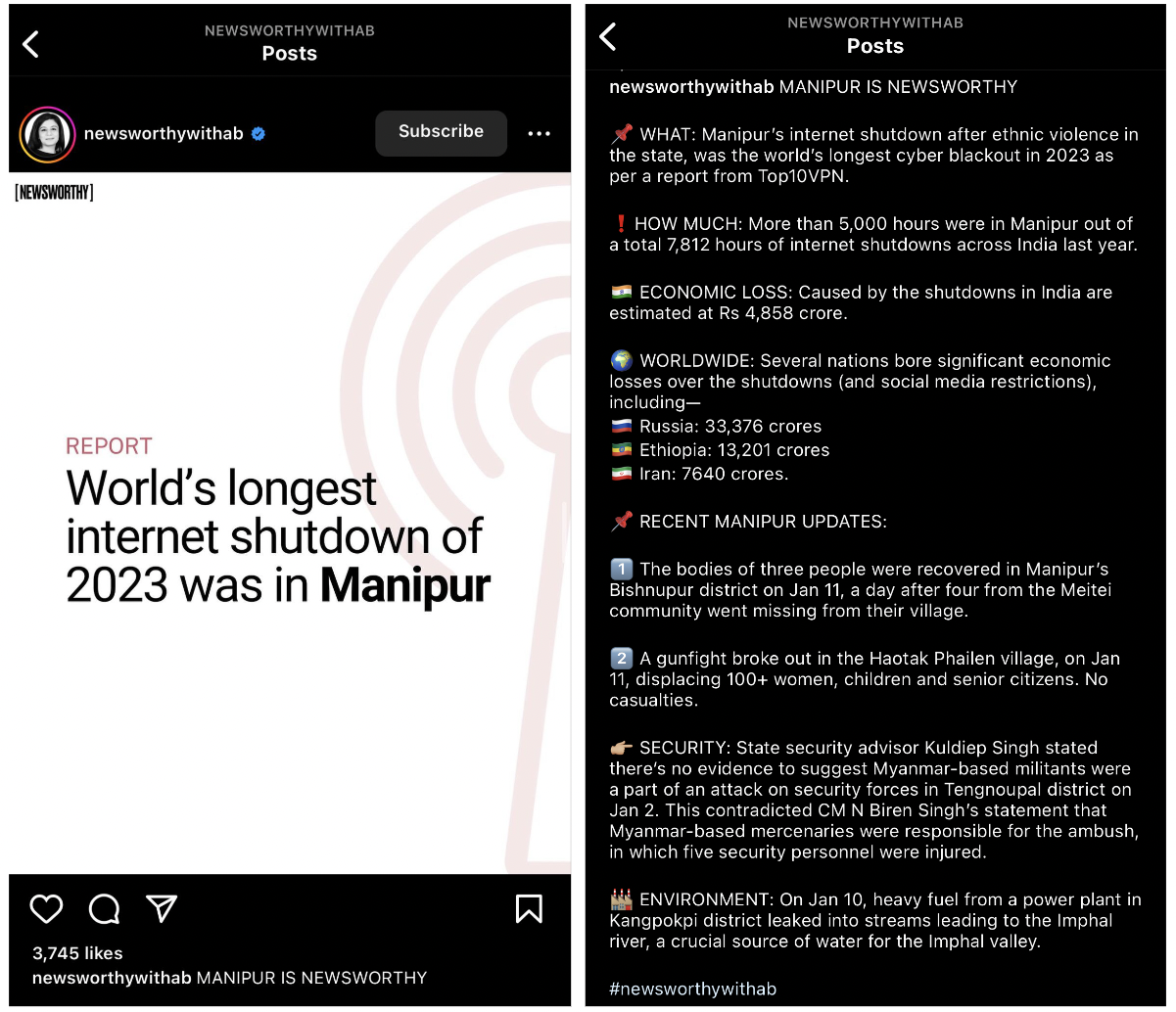Anubha Bhonsle is a former ICFJ Knight Fellow.
Mainstream Indian media has come under scrutiny for biased reporting and incomplete coverage of major events. What tends to be delivered to news consumers is opinion-led journalism featuring overstimulated news screens and loud anchors.
At the same time, newspapers and TV channels’ heavy reliance on revenue from advertising has cluttered the news space with partisan and product ads, compromising notions of journalistic neutrality.
“High-decibel screeching and frenetic finger-pointing seem to be the staple of daily television news channels today,” stated a recent report from the Network of Women in Media in India. Reuters Institute’s 2021 Digital News Report highlighted “a culture of 24x7 news channels operating on ‘Breaking news’ models and polarized debates [that] often distort and sensationalize news.”
This clutter and bias has real drawbacks: sensationalized coverage and excessive noise is making it harder to sort hard, factual reporting from opinion.
“If you took a snapshot of the news, you would see that it was a collection of all things not worthy of being news,” said Anubha Bhonsle, a former ICFJ Knight Fellow who previously served as executive editor at CNN-IBN. She resigned from CNN-IBN in 2017, after 11 years at the network, which she said had become “a shadow of its former self.”
In this environment, a platform that simply gets the facts right is immensely valuable. To meet this demand, in 2019 Bhonsle launched her own digital news platform, Newsworthy, on Instagram. The platform seeks to provide its audience “something that is of value to them, is in the public interest, and just doesn't leave them with a feeling of anxiety.”
Decluttering the news
Newsworthy highlights daily breaking news on political and social issues in India, major international events, climate, and news from crisis zones. Additionally, it features public service announcements and fact checks, and occasionally publishes posts of paintings and short poems under an art therapy category.
The Instagram-centric outlet doesn’t have a website that it directs its readers to. Instead, it provides detailed descriptions of news events through captions on its Instagram posts. The posts typically feature a headline or quote by someone prominent. The captions include their own concise and to-the-point headlines followed by more details.
For example, a post about misinformation posing risks ahead of elections leads with a caption that says “WATCH OUT.” Another post, about a phone call between Indian Prime Minister Narendra Modi and Russian President Vladamir Putin, starts with “HELLO, RUSSIA?”
The text that follows is divided into short paragraphs led with emojis, and which break the story down into its component parts. According to Bhonsle, these components aim to answer the questions that editors often ask their reporters.
“What? Where? When? Why? It's sort of the old school basics told in a modern way,” she said.

The edgier headlines and short breakdowns of the news events have been the most essential aspects of Newsworthy’s efforts to declutter and simplify the news, Bhonsle said.
Decluttering, she continued, doesn’t mean simply aggregating news from different websites or outlets and presenting it in a cohesive format. Newsworthy’s posts include context for the news event, input from sources, quotes by key individuals in the story, and reactions to the events in question.
When covering international events, such as the recent U.S. airstrikes in the Middle East, Newsworthy’s posts often highlight reporting from reputable news organizations such as CNN, Reuters and Al Jazeera.
“We're consuming the whole host of information – we're calling people, we're calling journalists on the ground sometimes and we are fact-checking it,” Bhonsle said.
An Instagram-first approach
Today, 72% of young, mainly English-speaking Indians get their news online. About 39% and 32% use Facebook and Instagram, respectively, for their news consumption, according to Reuters Institute’s 2023 Digital News Report.
Opting for an Instagram-centric approach was influenced by this reality, that young audiences were actively seeking news content on social media. Instagram was also particularly suitable because of the low cost of production compared with running a website. A year after starting their Instagram page, Newsworthy expanded on YouTube, though their reach on Instagram remains higher.
Although most news media in India are highly dependent on advertising revenue, Newsworthy is funded by monetary contributions from followers and commissioned work for clients. Keeping the content freely accessible is a top priority for Bhonsle.
“I believe news is in the public interest, and as long as I can manage it, it should be free,” she said.
Newsworthy.Studio
Newsworthy depends in large part on its creative agency, Newsworthy.Studio for revenue. Newsworthy.Studio provides services to NGOs and development organizations, media outlets, news organizations and journalism schools. These services include producing documentaries, podcasts, animations, training modules and more.
“This is work for the client. It's for their communication and their audiences,” said Bhonsle, adding that she steers clear of politics. “We work with clients and foundations. We don’t work with political parties.”
Expansion
There are five full-time members on the Newsworthy team today, including Bhonsle. The outlet also hires consultants on a freelance basis. “It's a diverse group, and not all of them come from the news background, which is why I think it's so dynamic,” said Bhonsle.
Overall, including the full-time staff and consultants, the Newsworthy team is a mix of journalists, researchers, data specialists, illustrators and web developers. Bhonsle is looking to grow Newsworthy, as Instagram's parent company, Meta, is pulling away from the news distribution business, and social media traffic for news is on the decline. For instance, the outlet is in the process of launching a newsletter on Substack, which will include more traditional reporting and original interviews.
“I'm not wedded to [Instagram]; I'm not an Instagram journalist,” said Bhonsle. “I'm just a journalist who has found a decent audience on Instagram.”